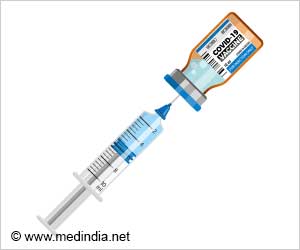Smokers, patients with bipolar disorder, depression, pulmonary hypertension are at higher risk for persistent opioid use, as per the new study.

TOP INSIGHT
Patients should receive counseling about the safe use of opioids and be offered alternative pain management choices, like limited or non-opioid multimodal treatment and be monitored frequently and closely while they are taking opioids.
Read More..
Opioids are effective, but they are highly addictive and patients may not realize that patients are misusing them, which can lead to an accidental overdose.
“The more than 100 million surgeries in the U.S. every year create an unintended and alarming gateway to long-term opioid use,” said Gia Pittet, Au.D., Ph.D., lead author of the study and visiting graduate researcher for anesthesiology and perioperative medicine at the University of California, Los Angeles.
“Clearly the management of opioid administration during the postoperative period needs to extend well beyond the hospital stay, with better transfer of care to the primary care physician.
Additionally, our findings identify which patients would most benefit from effective preoperative consultation and should be followed especially carefully after surgery.”
Researchers found that 21.2% of patients refilled their opioid prescription three months to one year after the procedure. Unless they have cancer or had chronic pain before surgery, very few patients should still need opioids three months after surgery, the researchers note.
This study enabled researchers to look across the entire invasive surgery population. They found that procedures with cardiac and podiatry surgical providers and patients who had cataract surgery were at an increased risk of persistent opioid use.
“To reduce the likelihood of ongoing opioid use, physician anesthesiologists should use the preoperative assessment to identify patients at highest risk for persistent use,” said Dr. Pittet.
“Before they have surgery, patients who smoke should be encouraged to quit, those with pulmonary hypertension should see a doctor to help them get the condition under control and patients with bipolar disorder or depression may require a preoperative adjustment of their medications.”
Patients should receive counseling about the safe use of opioids and be offered alternative pain management choices, such as limited or non-opioid multimodal treatment and be monitored frequently and closely while they are taking opioids.
The Centers for Disease Control and Prevention (CDC) reported there were 94,000 drug overdose deaths in 2020, nearly 30% more than the previous year. While the CDC notes synthetic opioids (primarily illicitly manufactured fentanyl) appear to be the main reason for the increase, persistent opioid use after surgery can play a role.
The ASA provides information about opioid abuse as well as alternatives to opioid treatment.
Source-Medindia
 MEDINDIA
MEDINDIA

 Email
Email








